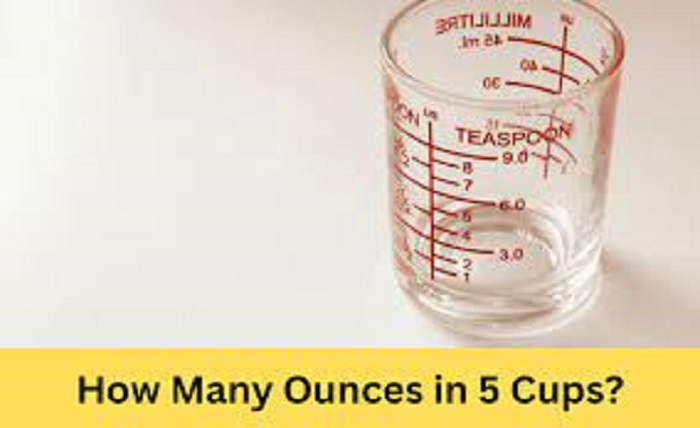If you love baking or cooking, you probably know how important it is to measure your ingredients accurately. Sometimes, you may encounter recipes that use different units of measurement, such as cups and ounces. How do you convert between them without messing up your dish?
In this blog post, we will show you how to convert 5 cups to ounces, both for dry and liquid ingredients. We will also explain why cups and ounces are not interchangeable units, and how to use online tools to make your conversions easier.
What are Cups and Ounces?
Cups and ounces are two common units of measurement used in the United States and some other countries. However, they measure different things: cups measure volume, while ounces measure weight or mass.
A cup is a unit of volume equal to 1/16th of a US gallon, or about 236 milliliters. A cup can hold different amounts of different substances, depending on their density. For example, a cup of flour weighs less than a cup of butter.
An ounce is a unit of weight or mass equal to 1/16th of a pound, or about 28 grams. An ounce can also refer to a unit of fluid volume equal to 1/128th of a US gallon, or about 30 milliliters. A fluid ounce is used to measure liquids, such as water, milk, or juice.
How to Convert 5 Cups to Ounces for Dry Ingredients
To convert 5 cups to ounces for dry ingredients, such as flour, sugar, or butter, you need to know the density of the substance you are measuring. Density is the amount of mass per unit of volume. Different substances have different densities, so they weigh differently in the same volume.
To find the density of a substance, you can use online sources, such as this one. Alternatively, you can use the average values for some common ingredients, such as these ones.
Once you know the density of the substance, you can use this formula to convert 5 cups to ounces:
Weight in ounces = Volume in cups x Density x 8
The number 8 comes from the fact that there are 8 fluid ounces in a cup. However, this is only an approximation, since fluid ounces and dry ounces are not equivalent.
For example, if you want to convert 5 cups of all-purpose flour to ounces, you can use the average density of 0.55 grams per milliliter. Then, you can plug in the values into the formula:
Weight in ounces = 5 x 0.55 x 8
Weight in ounces = 22
Therefore, 5 cups of all-purpose flour weigh about 22 ounces.
Here are some other examples of converting 5 cups to ounces for dry ingredients:
| Ingredient | Density (g/mL) | Weight (oz) |
|---|---|---|
| Flour (all-purpose) | 0.55 | 22 |
| Flour (bread) | 0.56 | 22.4 |
| Butter | 0.91 | 36 |
| Honey | 1.42 | 56.8 |
| Margarine | 0.97 | 38.8 |
| Milk | 1.03 | 41.2 |
| Oats | 0.43 | 17.2 |
| Sugar (granulated) | 0.8 | 32 |
| Sugar (brown) | 0.79 | 31.6 |
| Sugar (caster) | 0.75 | 30 |
| Sugar (powdered) | 0.5 | 20 |
How to Convert 5 Cups to Ounces for Liquid Ingredients
To convert 5 cups to ounces for liquid ingredients, such as water, milk, or juice, you can use a simpler formula:
Volume in fluid ounces = Volume in cups x 8
This formula works because there are exactly 8 fluid ounces in a cup.
For example, if you want to convert 5 cups of water to fluid ounces, you can simply multiply by 8:
Volume in fluid ounces = 5 x 8
Volume in fluid ounces = 40
Therefore, 5 cups of water equal to 40 fluid ounces.
Here are some other examples of converting





